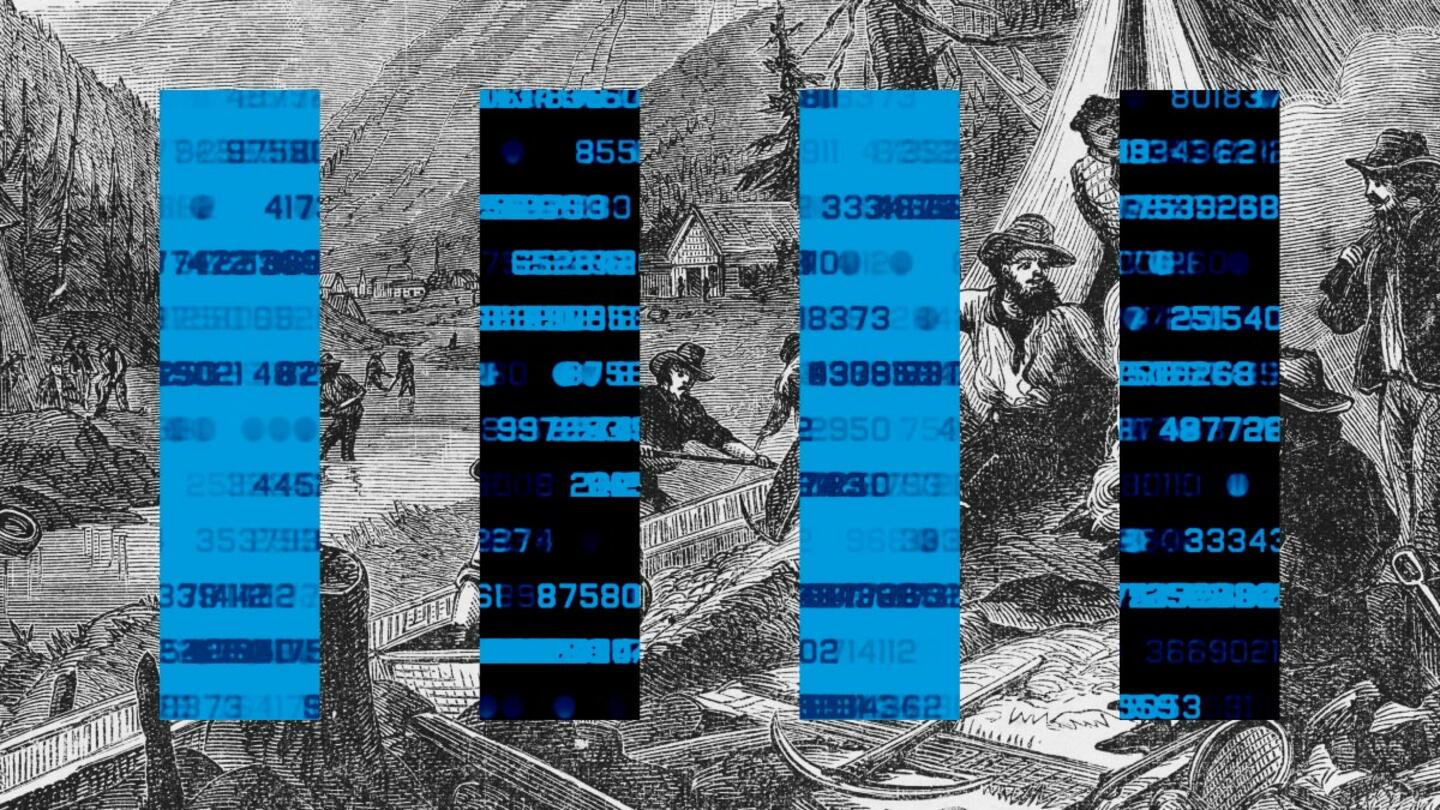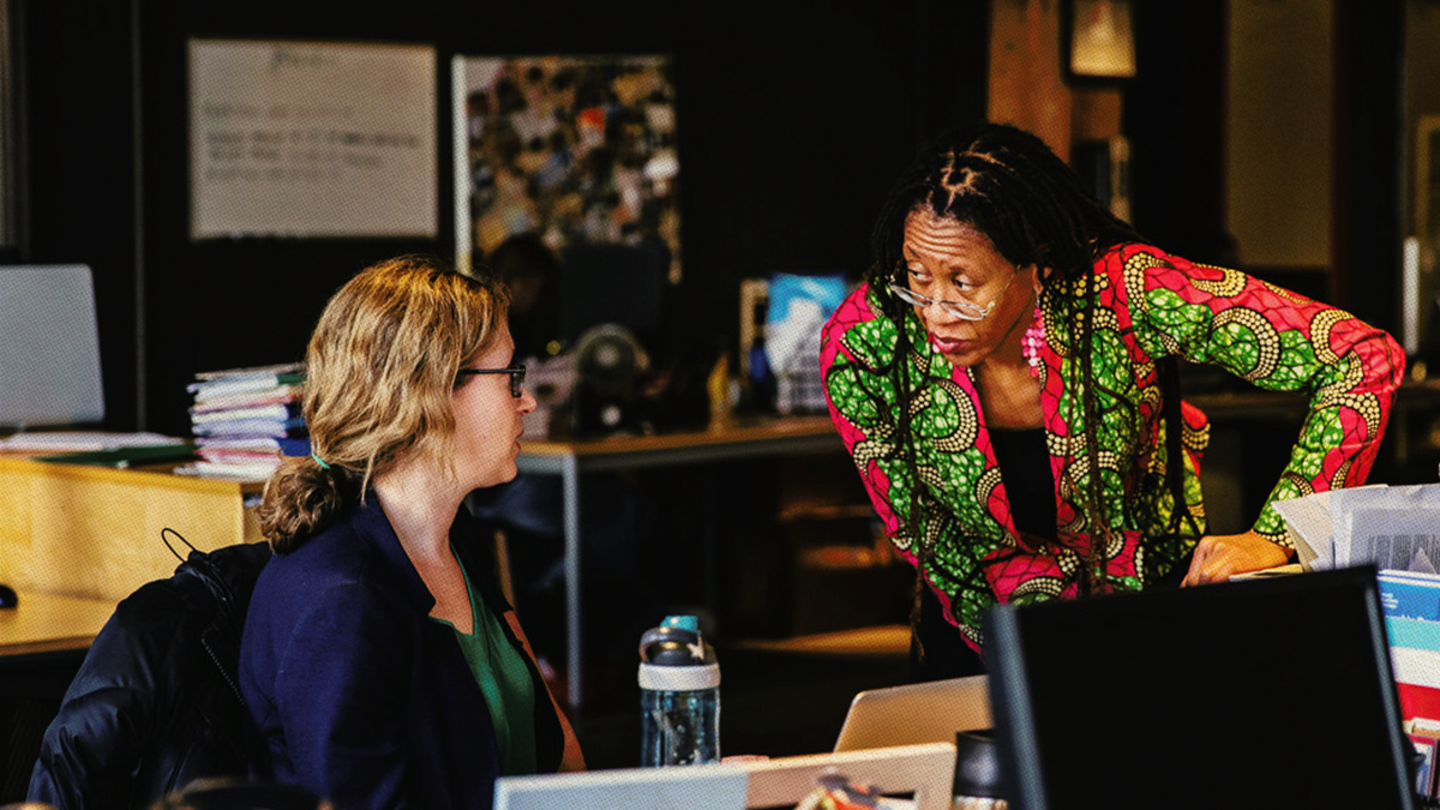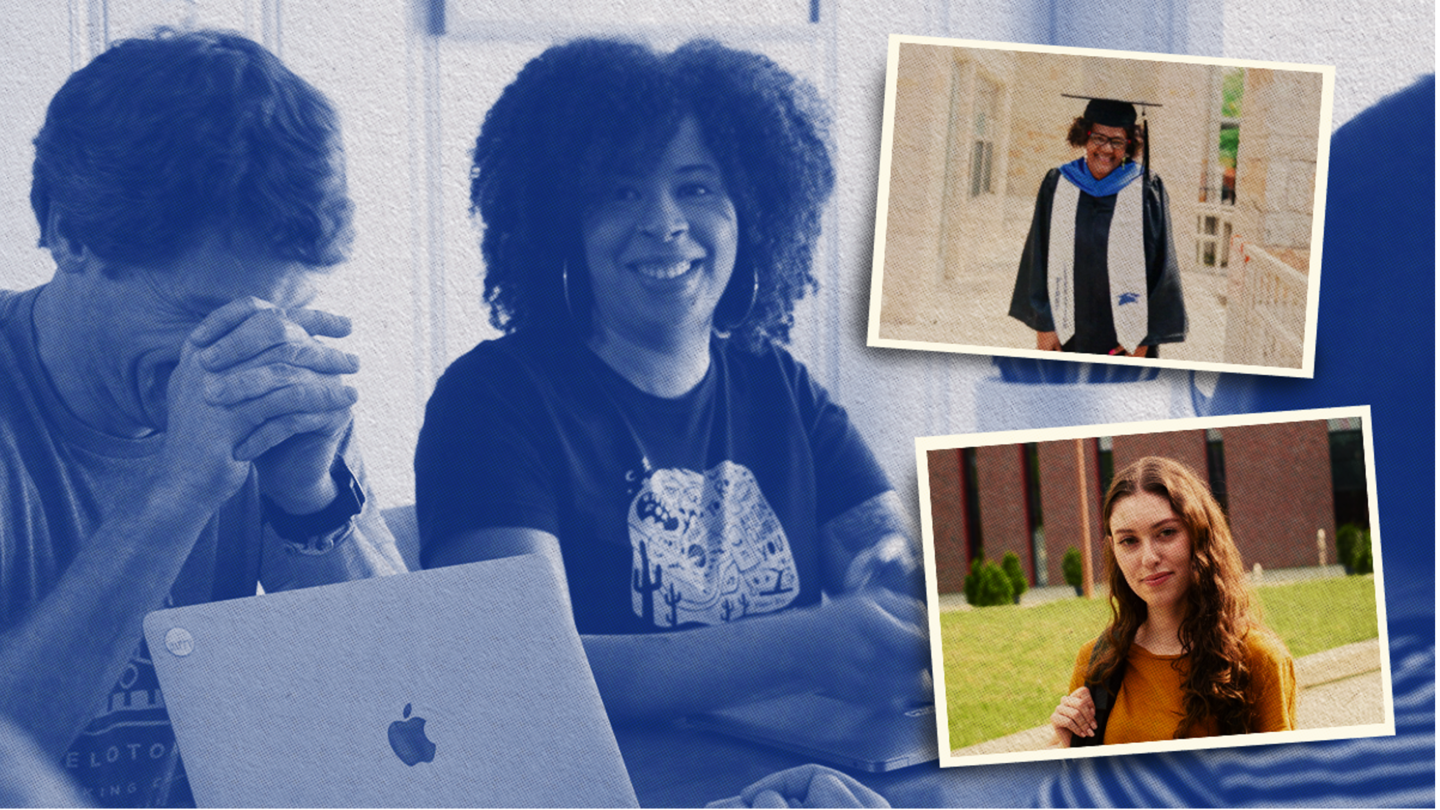Nearly 400 years after Harvard, our nation’s first university, opened its doors in 1636, postsecondary education in the United States has remained oddly frozen in time. Considering the extraordinary technological changes that have transformed society since then, it’s puzzling that most colleges and universities have not evolved their learning models as quickly.
Luckily, that’s beginning to change. Jolted into action by the Great Resignation and unprecedented levels of job switching, forward-looking educators started to recognize the need to help learners at all ages discover their strengths and interests by providing education programs and connecting learners to fulfilling job opportunities.
Putting self-discovery first and skills development second represents a paradigm shift in the field of work and learning. This new approach grew out of an awareness that when it comes to recruiting employees, skills matter. But when it comes to keeping them, purpose is the golden ticket.
Ryan Stowers, executive director of the Charles Koch Foundation, says it’s time to scale innovations that challenge today’s top-down education system by helping learners uncover their natural talents and acquire skills that will allow them to fulfill their potential.
Innovative education organizations like Reach University, Education Design Lab, and PelotonU are doing just that. Here’s how.
Looking for a win-win talent plan? Try apprenticeships
Consider the irony: The United States is facing a high number of teacher vacancies, impacting all 50 states. At the same time, we have 1.3 million classroom aides, many of whom have the desire and skills to become teachers. But they can’t for lack of a bachelor’s degree.
That scenario is playing out across industries. Employers have unfilled jobs while talented applicants without a four-year degree have no path to get them. For too many students, decisions within traditional postsecondary education mean choosing between a job they need today versus the career they want tomorrow.
This one-size-fits-all approach to postsecondary education overlooks the unique talents and goals of each person. As a result, many people are left behind, while others struggle through traditional university programs, often incurring massive debt, only to find the degrees they acquired are disconnected from who they are and what employers need.
The failure to create a system that empowers people to find their purpose is undermining individuals, communities, and the entire nation.
Reach University, a Stand Together Foundation Catalyst partner and Charles Koch Foundation grantee, wants to change that. Reach is the first fully accredited nonprofit university to offer apprenticeship degrees, which are programs where work leads to a bachelor’s degree rather than the other way around.
How Reach University works
If a school district needs teachers, it partners with Reach, which provides online teacher training to interested candidates. At the same time, these students get paid and earn college credits for working under a certified teacher’s guidance in the classroom.
The work-based learning is reinforced with Oxford-style teaching tutorials in the form of small group discussions that help students reflect on and refine what they learn both in their online classes and in the classrooms they are helping to lead.
After three years, students earn a bachelor’s degree and get their own classroom while continuing to take certification classes for two more years. Reach Founder and Chancellor Mallory Dwinal-Palisch says, “By the time they exit teacher training, they’ve logged as many classroom hours as a fifth-year teacher.”
The Reach model benefits employers and employees
Elizabeth Alonzo wanted to be a teacher but had only an associate’s degree. After enrolling in Reach, she is working as an English as a second language aide in Alabama’s Russellville City School District while earning a teaching degree — debt-free — through Reach.
Alonzo’s services were desperately needed. Like so many other school districts, Russellville had a demographic mismatch. The district is 53% Hispanic, but had no bilingual teachers.
Superintendent Heath Grimes recruited teacher candidates like Alonzo from the local church and elsewhere, then contracted with Reach to train them. Elizabeth and others like her become full-time teachers once they earn their degrees, taking an important step toward fulfilling their potential and finding their purpose. And Russellville has started filling its demand for bilingual teachers.
Demand for apprenticeships Is exploding around the country
Since Reach launched its apprenticeship-to-degree program, more than 1,000 teachers’ assistants have enrolled in the program and thousands are on a waitlist.
And now other industries are catching on that apprenticeships are a model that might work for them. While addressing teacher vacancies in Alabama, Arkansas, California, and Louisiana, Reach is expanding its unique model to employers and institutions in industries like information technology, manufacturing, and health care.
Business leaders and employers can help transform the postsecondary education system by changing the way they think about hiring and developing employees. This groundswell will send the demand signals necessary to disrupt postsecondary education and unlock the potential of more than 100 million students and workers.
Sign up for Stand Together's Rethinking Work & Learning newsletter to get the latest stories, ideas, and trends on the future of employment.
At Education Design Lab, new skills stack up to success
Imagine an affordable alternative to a four-year college degree, one where employers help design curricula around specific skills so learners of all ages and stages qualify for good jobs quickly and with little or no student debt. That, in a nutshell, is the plan behind the Community College Growth Engine Fund, which launched in 2018.
Developed by Education Design Lab (EDL), a nonprofit that designs and validates new learning methods and champions successful models that drive policy and practice change, the Growth Engine Fund bolsters transformational workforce training programs like SkillUp, with the support of partners like the Charles Koch Foundation and the Walton Family Foundation. A flock of companies with experience in inventive lesson design, including Amazon, Google, IBM, and Microsoft, are collaborating with EDL to ensure curricula matches the skills and competencies employers need.
To begin, six community colleges are using this model to develop 18 new credentials, called micropathways. Each pathway takes 18 months to complete and prepare students for in-demand jobs. Credentials will be “stackable,” setting up students for further study while they gain work experience at each career stage. EDL expects the program to scale fast, reaching 1 million U.S. students by 2026.
In May 2023, the Community College of Philadelphia (CCP) announced the launch of the “Electro-Mechanical Technology” and “Computer Support Specialist Technician" programs, two innovative micropathway opportunities. These programs will help ensure access to opportunity for learners and a source of skilled, diverse talent for local employers. Equally important, the programs will demonstrate a powerful education/employer partnership model that can be scaled.
PelotonU empowers a new generation of students with self-paced, online learning
When watching the Tour de France, the world’s most famous cycling race, you don’t see a single athlete traversing the punishing terrain alone. Groups of cyclists ride together, all wheels and legs and bright colored jerseys in a huffing, living pack. These groups are protecting each other, helping each other through one of the most grueling feats of athleticism in the world.
This pack is called a peloton. Cyclists ride this way because they can ride better, faster, farther, and they can help their premier racer win. Going it alone is not the best strategy.
For some college students — those who may need to work or take care of a loved one while learning — fulfilling their potential and living their dreams can feel like being a solo cyclist. Challenges can feel impossible to surmount.
As it is traditionally structured, college requires a massive investment of time and money. For the many students who are not wealthy, are commuters, work full-time jobs, or have families to take care of, it’s a model that doesn’t work because it wasn’t designed for them. When contemplating a postsecondary degree, Ashley, now a PelotonU student, wondered, “How am I going to be a full-time mom? And pay for all this, at the same time?”
“Over 70% of students are working full time and supporting a family,” says Hudson Baird, founder and executive director of PelotonU. “So when forced to choose between the very fixed structure of school and the important commitments and responsibilities of a full life, students are forced to make an impossible choice.”
These challenges contribute to a startling reality: 45 million Americans who began their college journey never finished.
PelotonU takes a different approach, one where demonstrating skills learned is more important than credit hours clocked, and where a community and coaches support students like Ashley on their journey.
The PelotonU self-paced online college is a different type of school
Although community colleges and online degree programs have brought college education to more people than ever before, they still rely on the old one-size-fits-all model and fail to focus on flexibility in learning.
By focusing on how many credit hours learners have taken and mandating a curriculum that is not responsive to learner goals or well-connected to job opportunities, too many colleges operate more like assembly lines than learning laboratories, losing students in the process.
“Until we really reevaluate the way that school is designed, we’ll miss so much that some of our brightest and hardest working learners have to offer,” Baird says.
PelotonU offers a new model to realize human potential. The college’s student body is a microcosm of the new face of students and strivers in the United States, the ones whose potential is being left unrealized.
According to PelotonU, 42% of their students are parents like Ashley; 56% have tried college using traditional models before; and 86% are the first ones in their families to pursue a college degree. But the most important number of all is that 81% of PelotonU students reach their learning goals within standard timelines, around three years.
Competency-based education focuses on learning, not tests
PelotonU measures success based on an individual’s ability to prove they’ve developed, and mastered, the skills they need.
PelotonU students don’t pile up hours to earn a degree. Instead, the school uses a teaching philosophy known as competency-based education. Students are allowed to work at their own pace and learn without tests or grades. Project-based degree programs help students learn by doing. Then, by demonstrating mastery of a new skill, students progress to the next one.
This process turns learning into a unit of progress, Baird says; because students need to demonstrate 100% knowledge, they are also learning how to learn.
PelotonU partners with regionally accredited nonprofit colleges that have expertise in competency-based online learning, like Southern New Hampshire University and Western Governors University, to help students obtain the associate or bachelor’s degrees that are right for them.
These programs include cybersecurity, communications, health care management, and information technology. If none of those seem right for a particular student, PelotonU will work with them to create a more personalized path. Once they have found their best option, the students demonstrate their mastery and cross the line in each stage, and just like a cyclist they move toward their eventual goal, with a coach and a team to help them.
At PelotonU, nobody rides alone
Students need their own peloton of people who know their struggles, know their dreams, and can help them achieve their goals. So, to help their students fulfill their potential, PelotonU lifts a page from cyclists: students are paired with a community and a personal coach to provide encouragement and help them navigate what can be a pretty tricky race.
These coaches are not merely tutors. Ashley and her coach Noemi talk every day — and not just about schoolwork. This frequent interaction helped her to truly get to know Ashley, her unique interests and skills, the barriers that could affect her studies, and the type of career Ashley might find fulfilling. By learning about Ashley, Noemi can help her define a learning path that will lead to success.
“With nontraditional students, there’s a lot of shame that we are dispelling,” Noemi says. “And giving her the tools to empower herself, to rewrite those narratives, it’s a beautiful process.”
Now, with a coach and PelotonU to support her, Ashley is one step closer to realizing her dream: opening her own school. Ashley now knows college can be for her too, and that a team, a community, of people want her to succeed.
It's that type of supportive community that can help every person do more than they ever imagined. Baird says, “To do hard things, we need a group to ride together with us.”
***
This article originally appeared on Forbes BrandVoice.
The Stand Together community partners with changemakers who are tackling the root causes of America’s biggest problems.
Learn more about Stand Together’s efforts to transform the future of work and explore ways you can partner with us.

Why AI may help more people achieve the American Dream.

Data centers are at the forefront of the ‘new economy.’ But what exactly are they?

Here’s how to bridge the disconnect between employers and employees.

Lessons learned from Colorado.
